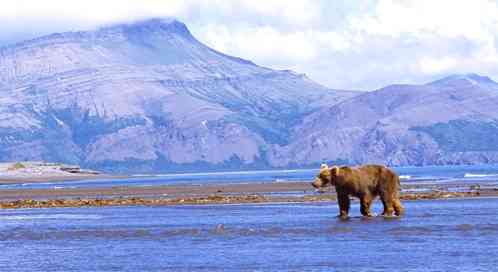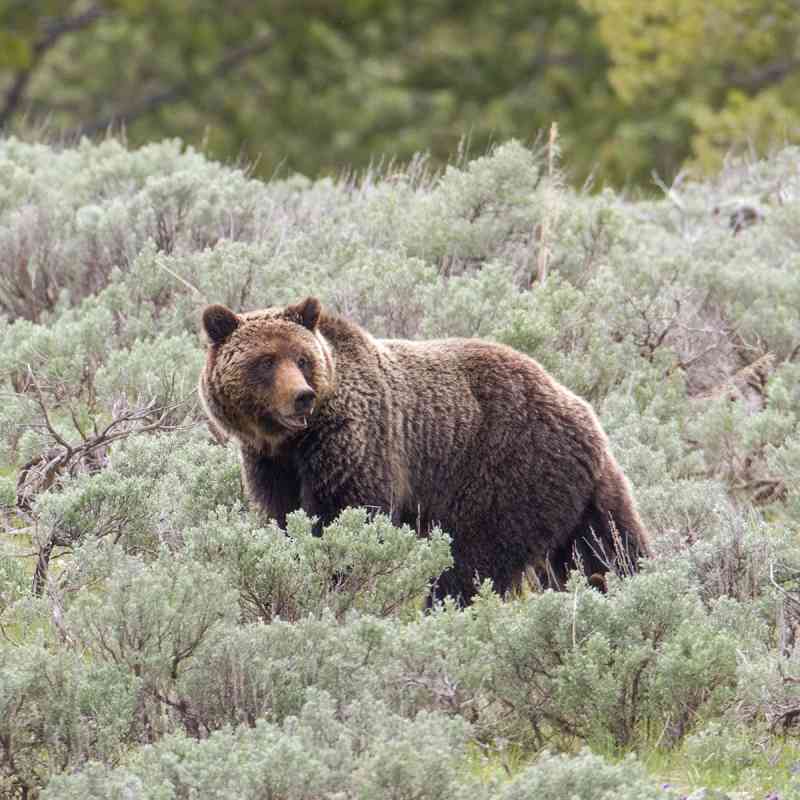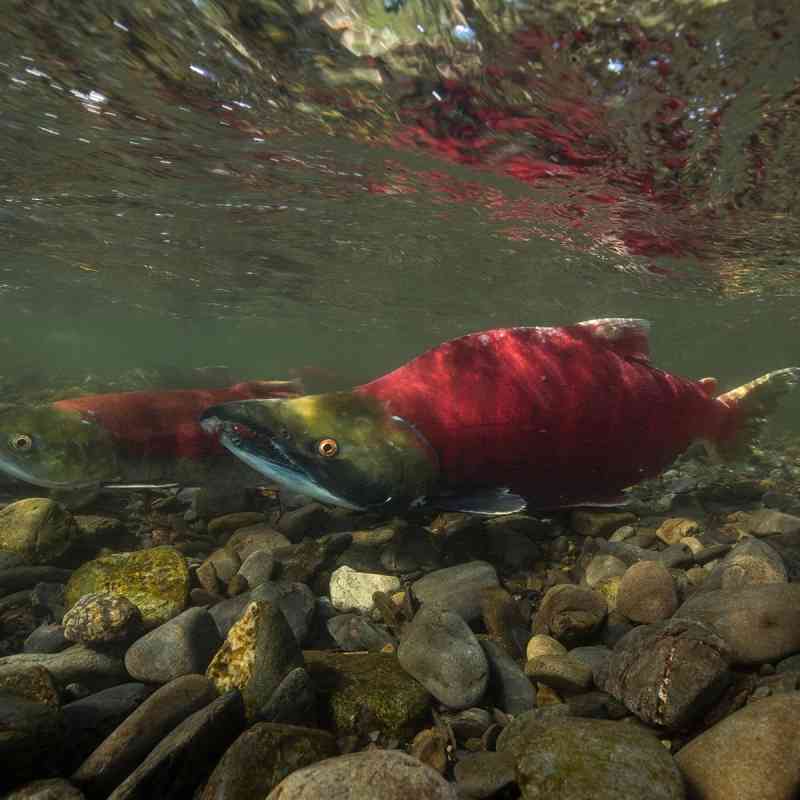The call for permanent protection continues in Alaska’s Bristol Bay, where offshore drilling threatens wildlife and a way of life.
by Dan Strickland
The sockeye salmon breaking the surface in flashes of silver look like giant popping kernels of corn.
It’s July and the fish are leaping upstream in the millions to spawn in the Bering Sea’s Bristol Bay, off the coast of southwest Alaska. With the run at its peak, anyone wading in hip boots here can feel the fish hitting and careening off both legs.
These sockeye—along with Chinook, halibut, pollock, cod and crab—make Bristol Bay one of the most productive, unspoiled wild fisheries on Earth. Almost half of the seafood harvested in U.S. waters comes from here, generating more than $2 billion a year and supporting fishermen throughout Alaska and down the West Coast. Bristol Bay also provides vital habitat for hundreds of other fish species, dozens of marine mammal species—including threatened northern sea otters, walruses and several species of imperiled whales—and is home to one of the world’s largest concentrations of seabird colonies.
“There are certain assets in our national heritage that are simply too spectacular and too valuable to be put at risk. Bristol Bay is one such place.”
On shore, four national wildlife refuges attest to the area’s magnificence and its abundant variety of life. Bears roam in impressive numbers. Caribou prance across the hills in delightful counterpoint to the moose that stand quietly chewing willow and alder scrub. Wolves, lynx, hares and other animals play out scenarios little changed throughout the ages. Birds darken the skies in mind-numbing, inconceivable numbers. “This area is one of nature’s more wonderful gifts—rich almost beyond words,” says Karla Dutton, director of Defenders’ Alaska office. “There are certain assets in our national heritage that are simply too spectacular and too valuable to be put at risk. Bristol Bay is one such place.”
Yet despite being one of the country’s most sustainable and spectacular remaining marine ecosystems, 5.6 million acres in Bristol Bay—dubbed the North Aleutian Basin—is at risk from oil and gas companies eager to drill. Alaska’s northern coast, bordered by the Beaufort and Chukchi seas, has also seen high interest from oil companies, with Shell actively pursuing new drilling options for 2012.
Bristol Bay is currently protected by an executive order granted by President Obama in 2010. But that protection may only be temporary if stronger action isn’t taken. “History shows that this region is never fully off the table,” says Robert Dewey, Defenders’ vice president for government relations. “Bristol Bay needs permanent protection or it could be reopened to oil and gas development as part of the country’s next off-shore plan in five years—or perhaps even sooner if a new president is elected in 2012. It would take only the swift stroke of a new president’s pen for the current protection to be withdrawn as quickly as it was implemented.”
To this end, Defenders is calling for Bristol Bay’s permanent protection by lobbying lawmakers on Capitol Hill and working directly with the residents of southwest Alaska. “Defenders recognizes this as a unique world-class ecosystem facing a final ‘tipping point’ in which the very survival of its wildlife and people are at stake,” says Sierra Weaver, a Defenders’ attorney. “Bristol Bay is part of our collective global heritage, and the more that message reaches caring and empathetic individuals in the lower 48 states and throughout the world, the better the chances that it will be protected.”
Despite assurances from the oil industry—Shell Oil has long claimed it can operate safely in the Arctic Ocean without threatening wildlife and the environment—a catastrophic oil well blowout like the one that happened in the Gulf of Mexico in 2010 could trap oil for months under sea ice, where it would be nearly impossible for cleanup crews to reach. The oil could also collect around the edges of ice sheets and breathing holes used by seals, bowhead whales and other marine mammals. In 2008, two years before the Gulf oil disaster, the National Marine Fisheries Service—one of the federal agencies that reviewed plans for the Deepwater Horizon rig in the Gulf—recommended removing Bristol Bay from the offshore leasing program, calling plans to drill there “unrealistically ambitious.”
Federal studies predict at least one major spill as well as a number of smaller spills if drilling is allowed in Bristol Bay. The sea ice, high tides and strong currents that occur in this area would make any spill—whether small or large—difficult, if not impossible to contain and clean up. Dramatic images from the Discovery Channel TV reality series “Deadliest Catch,” which chronicles the lives of fishermen in the Bering Sea, reveal black winter nights, immense waves ripped by 100-knot winds and fishermen battling icy crab pots in frigid waters. It’s not hard to imagine that an oil spill response would be extremely difficult here. When the cargo vessel Selendang Ayu ran aground near the Aleutian Islands off Alaska in December 2004, months passed before any real response could take place, and oil still remains on beaches.
One of the refuges closest to the North Aleutian Basin leasing area, Izembeck National Wildlife Refuge, contains some of the world’s largest eel grass beds. “They provide the largest migratory staging area for waterfowl and shorebirds on the continent,” says Terry Hoefferle with the Alaska Marine Conservation Council in Anchorage. “There is evidence that salmon smolts from Bristol Bay rivers also use the beds for cover and food as they adapt to a saltwater environment. This habitat could not be recovered from an oil spill.”
Even without a spill, research has shown that oil exploration could cause whales to abandon prime feeding areas. Whales are particularly sensitive to the noise associated with drilling operations and the seismic waves from air-gun explosions that the industry uses to detect oil and gas deposits. One of the most endangered whales on Earth, the North Pacific right whale, uses the southeast Bering Sea as an important summering ground. Fewer than 50 of these whales remain.
Bristol Bay landed on the radar of conservationists in 1986, when the Reagan administration first leased the North Aleutian Basin to a consortium of oil companies. Industry and government estimates put the oil and gas potential at 1 percent and 2 percent, respectively, of anticipated U.S. outer continental shelf resources, and projected that $7.7 billion might be generated over the 25- to 40-year life of any oil and gas field that might be found.
But Bristol Bay communities, the seafood industry and conservationists cried foul, citing the damage to fish and crab caused by the seismic blasts that precede drilling. Oil spills would be devastating to both larval and adult stages of fish and shellfish, to marine mammals and to land animals as well, since miles of sensitive shoreline would be exposed. The projected 200 production rigs would dump some 10,000 tons of toxic wastes into the sea, including heavy metals such as cadmium, chromium and mercury—a sludge cocktail potentially lethal to marine life. And the infrastructure associated with tanker traffic, the anticipated 150 miles of offshore pipeline, 50 miles of onshore pipeline, and the proposed liquefied natural gas production facility, would intrude upon critical habitat and staging areas for huge populations of shorebirds and migrating waterfowl.
Three years later, without any development in Bristol Bay yet taking place, the oil supertanker Exxon Valdez grounded itself on Bligh Reef in Alaska’s Prince William Sound. The oil spill killed tens of thousands of birds. “If oil came ashore in Izembek Lagoon from a spill in Bristol Bay during the breeding season, that level of avian mortality could be eclipsed virtually overnight,” says Richard Charter, a former Defenders of Wildlife spokesperson who is now a senior fellow with the Ocean Foundation. “It takes decades before toxic oil compounds break down. After years of study, we know that the oil still persists in the mussel beds—where otters and shorebirds feed heavily—more than two decades later.”
Federal studies predict at least one major spill as well as a number of smaller spills if drilling is allowed in Bristol Bay.
Following the Exxon Valdez disaster, Congress slapped a moratorium on much of the federal government’s planned offshore drilling, including within Bristol Bay. The locals in southwest Alaska regrouped and with Congress and the courts initiated a buyback program that resulted in oil companies relinquishing their offshore leases in 1995 for $100 million.
But in 2003 Congress yielded to relentless pressure from the oil industry to ease protections put in place with the moratorium. Additional protections by Presidents George Bush, Sr. and Bill Clinton in 1990 and 1998 were removed by President George W. Bush in 2007, and the drilling debate boiled to the surface again.
“We’re seeing a well-funded oil industry ‘disinformation campaign’ focused on promoting the false premise that by sacrificing America’s coastal natural heritage and our best fishing grounds, we can somehow make a significant dent in our need to import oil,” says Charter. “To the contrary, offshore drilling in Bristol Bay would instead put at risk one of America’s premier fisheries and the substantial export value it provides in fish products, while doing virtually nothing to move us toward energy independence.”
Though it may be difficult to assign a dollar value to the aesthetic assets of the wildlife found here, a recent Ecotrust study reveals that when the indirect costs and benefits of the fishing industry are calculated, crab, pollock, herring, salmon and other fisheries amount to more than $5 billion each year. Over 25 to 40 years, that equals $125 billion to $200 billion versus the potential $7.7 billion that oil and gas might generate over the same time period. “The long-term value of the renewable fisheries that operate in Bristol Bay far outweighs the short-term value of nonrenewable fossil fuel extraction in the area,” says Weaver. “Risking this ecological and economic powerhouse for short-term gain—and with potentially devastating results—is unwise and should be reconsidered.”
The consensus among the local communities, tribal organizations, seafood industry associations and conservation groups that are working together to secure permanent protection for Bristol Bay and the southeast Bering Sea, is that there is a promising political window of opportunity right now. But it’s a narrow opening that could be closing fast as the next presidential election approaches.
“We lost this place once,” says Charter. “Then we got it back with a great deal of blood, sweat and tears. If we make the same tragic mistake again and open Bristol Bay to oil and gas exploration, this truly unique ecosystem will be gone forever. The Interior Department needs to protect Bristol Bay once and for all. These waters are a rare gift from the Earth, and the legacy we should leave to future generations is that we had the wisdom to protect them.”
Related




